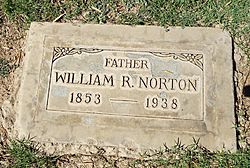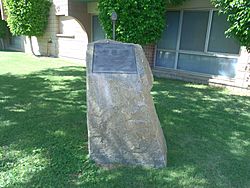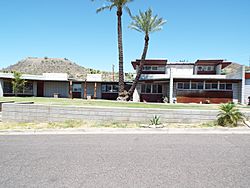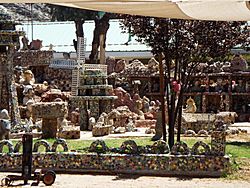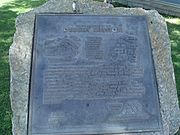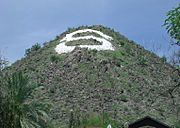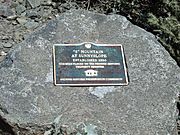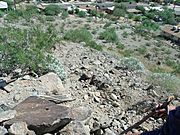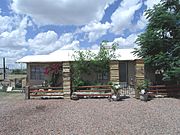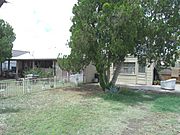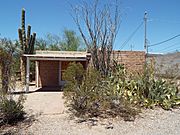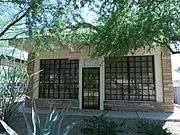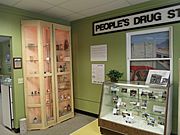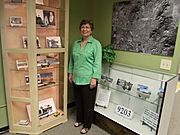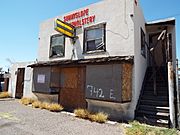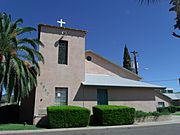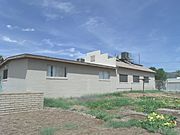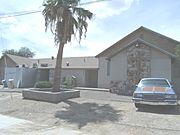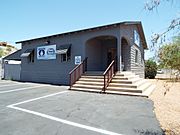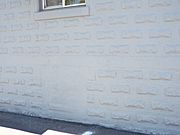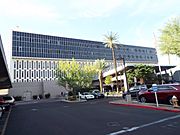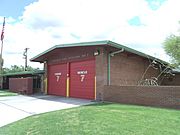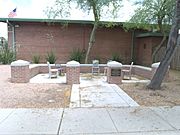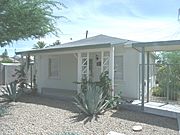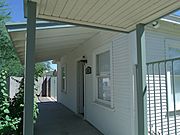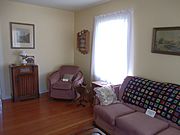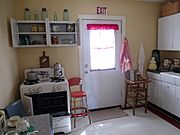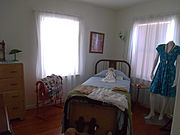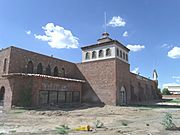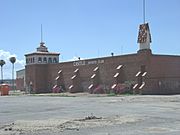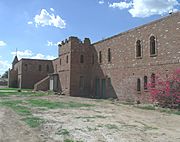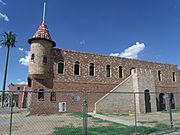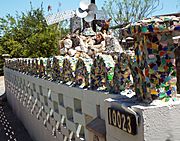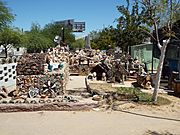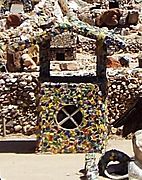Sunnyslope, Phoenix facts for kids
Quick facts for kids
Sunnyslope, Arizona
|
|
|---|---|
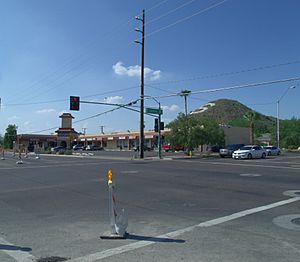
Intersection of Central Avenue and Hatcher Road
|
|
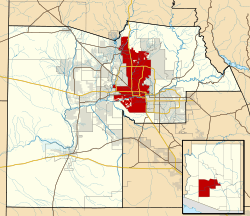
Location in Maricopa County and the state of Arizona
|
Sunnyslope is a special neighborhood located within the big city of Phoenix, Arizona. It stretches from 19th Avenue in the west to 16th Street in the east. To the north, it reaches Cactus Road, and to the south, it goes down to Northern Avenue. This area is about 9 square miles and has its own unique feel.
Even though it's part of a large city, Sunnyslope feels like a small town. It tried four times to become its own city but didn't succeed. So, in 1959, it officially became part of Phoenix.
Contents
Who Started Sunnyslope?
Sunnyslope is known for being a place where people came for their health. Many years ago, people with lung problems like tuberculosis traveled west. They hoped the dry air and sunshine would help them feel better.
The area we now call Sunnyslope was first planned by an architect named William R. Norton in 1911. He was born in Massachusetts in 1853. He became a famous architect in California. But his health wasn't good, so he moved to Phoenix in 1891. He believed the dry air would help him.
Mr. Norton designed important buildings like the first library in Phoenix. He also bought large areas of desert land. He planned out the "Sunny Slope" area. His family later joined him there. One day, his daughter saw the sun shining on the mountains and said, "What a pretty, sunny slope!" That's how the area got its name. William R. Norton passed away in 1938.
How Sunnyslope Got Its Name
The name "Sunny Slope" used to be two words. After World War II, it became one word: Sunnyslope. In 1919, Sunnyslope was mostly desert with only a few small houses. It was full of cacti and desert plants.
Because there was no irrigation, the area was very dry. This made it a good place for people with breathing problems. Many people from eastern states, called "health seekers," moved to Arizona. They often built small cottages or even lived in tents. They hoped to get well and then go home. Some had spent all their money to get there. There were no roads or electricity back then.
Helping Hands: Desert Mission and Angels of the Desert
Marguerite and William Albert Colley were among the first people to live permanently in Sunnyslope. They bought land in 1919 because their son was sick. Marguerite was a nurse and social worker. She started visiting her sick neighbors, bringing them food and help.
She met Elizabeth Beatty, who was also helping people with lung problems. People in Sunnyslope looked forward to their visits. Elizabeth and Marguerite became known as the "Angels of the Desert."
In 1927, they started the Desert Mission. This was a place that helped people with their medical, social, and religious needs. By 1936, about 600 people lived in Sunnyslope. There was still a lot of empty land with plants and cacti.
After World War II, many more people moved to Sunnyslope. New businesses, churches, and schools were built. Sunnyslope Elementary School opened in 1949. Sunnyslope High School opened in 1953.
Over time, the medical part of Desert Mission grew into a separate organization. It is now called HonorHealth. Its hospital in Sunnyslope is a major medical center. The Desert Mission still helps the community today. It has a food bank, a children's dental clinic, and a child care center.
A man named John C. Lincoln and his wife Helen moved to Sunnyslope in 1931. Helen had tuberculosis. The Lincolns became big supporters of Desert Mission. They helped lead the organization for many years. Helen Lincoln lived to be 102 years old, even though doctors had given her only a few years to live.
In 1946, Charles and Lillian Stough started "Sand," Sunnyslope's first newspaper. Later, it became the Sunnyslope Journal.
The "King" of Sunnyslope
Dr. Kenneth E. Hall lived in Sunnyslope in the 1940s. He called himself the "King of Sunnyslope." He built the biggest house in the area. Dr. Hall also built the North Mountain Hospital in 1955. It had a small zoo with monkeys on its grounds!
Dr. Hall was involved in some unusual projects. He used money from the government to help build El Cid Castle. This was a bowling alley that looked like an old castle. It took 20 years to build. The bowling alley closed after only one year. Dr. Hall passed away in 2001.
The Sunnyslope Rock Garden
The Sunnyslope Rock Garden was created by Grover Cleveland Thompson. He was a retired heavy-machinery operator who moved to Sunnyslope in 1952. He bought a house and started making art. He used things like Halloween masks as molds for his creations.
Thompson died in 1976. His house and garden were empty until 1979, when a teacher named Marion Blake bought them. Thompson's art has even been recognized by the Smithsonian American Art Museum. When Marion Blake retired, she gave the garden to the University of Arizona.
Sunnyslope's Weather
The Sunnyslope area has a special kind of weather called a microclimate. Around Royal Palm Park, the temperatures can be 3-4 degrees cooler than in other parts of Phoenix.
Becoming Part of Phoenix
Sunnyslope tried four times to become its own town, but it never happened. In 1959, the City of Phoenix officially took over Sunnyslope. Even though it's part of Phoenix, Sunnyslope has always kept its unique identity and small-town feel.
Sunnyslope Today
Sunnyslope is a very diverse neighborhood. People from all walks of life live there, from very wealthy to those needing more help. The John C. Lincoln Health Network, which grew from the Desert Mission, is the largest employer in Sunnyslope. It provides many health services.
Desert Mission Services still helps the community. It has a food bank, a dental clinic for kids, and a child care center. They work to meet the basic needs of people in Sunnyslope and North Phoenix.
In 2011, Sunnyslope was featured in a special home tour. This showed off the many cool homes and creative people who live in the area.
Sunnyslope High School
Sunnyslope High School is located at 35 W. Dunlap Avenue. It's part of the Glendale Union High School District and has almost 2,000 students. The high school is known for its great education, award-winning sports teams, and many clubs. It has been recognized as a top high school in the country.
Gallery of Historic Sunnyslope
- Historic Sunnyslope
-
Sunnyslope Mountain, also known as "S" Mountain. Students from Sunnyslope High School painted an "S" on the mountain in 1954.
- Historic "Walter Leon Lovinggood House"
- El Cid Castle



